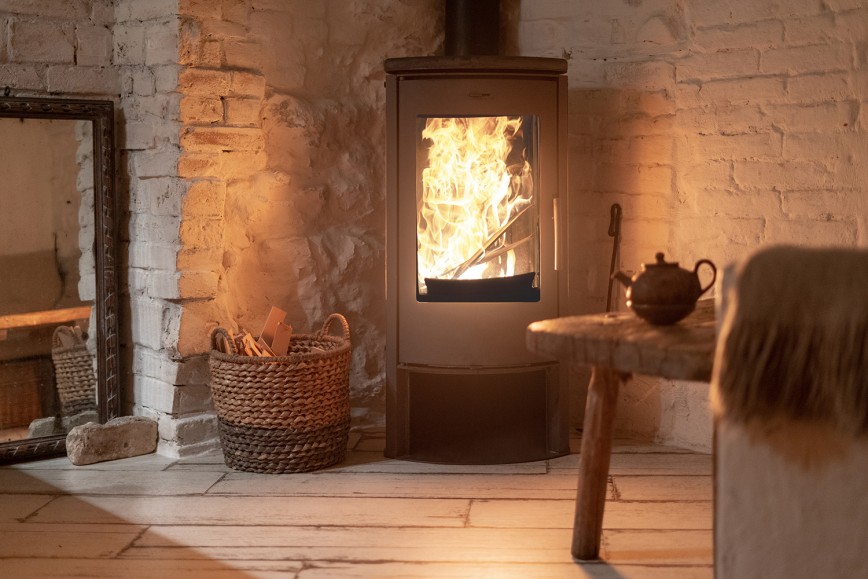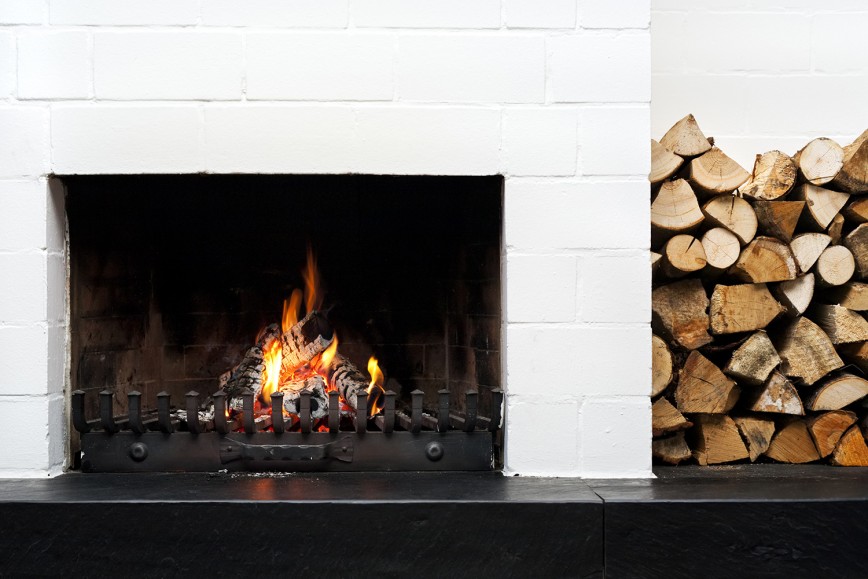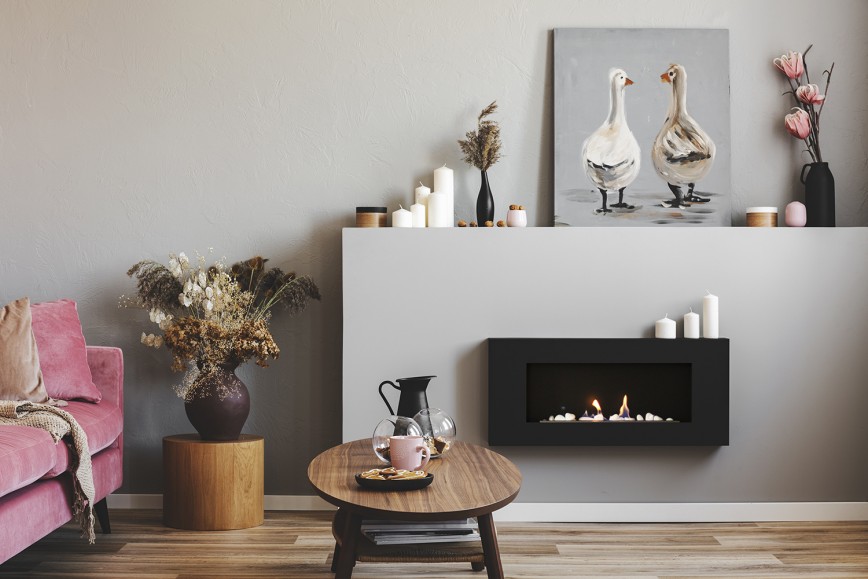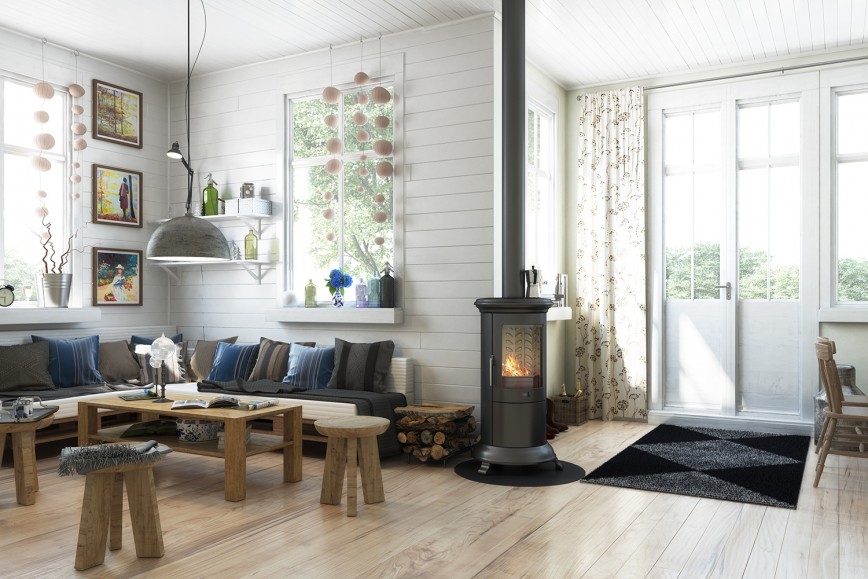The warm glow of a burning fireplace adds an ambience that creates a sense of warmth and well being.
There are many factors which can affect the ability of your fireplace to heat the entire house. Here, we explore the main types of fireplaces available in the UK and the effectiveness of each in terms of heat output.
Can a fireplace stove heat an entire house?
One of the most popular types of fireplaces found in homes across the UK are stoves. Stoves can work with a number of different fuel types, ranging from solid fuel/wood burning, through to decorative gas or electric stoves. Almost all electric stoves can be classed as “decorative only” and are generally fitted with a 2kw fan heater, which can be operated independently of the flame image. This heat output may be sufficient to warm a small space; however, expect cold spots in larger rooms, and be prepared for the temperature to drop fast once the fan heater is switched off.
As a general rule of thumb, solid fuel/wood pellet stoves offer far more heat output when compared to gas or electric options. Furthermore when compared to electric stoves, solid fuel and gas stoves tend to radiate heat from the solid cast iron body long after the fire is switched off.

Solid fuel and wood pellet stoves burn at a higher temperature and can offer up to 12kw of heat output (which is over four times higher than central heating radiators found in the average-sized living room!). This type of stove has more chance of heating up a large open-plan space or ground floor area if doors are kept open.
Although gas stoves do offer convenience and respectable heat outputs of up to 5kw, wood pellet stoves (with automatic loading) offer similar levels of convenience, but far higher heat outputs.
If you find that a solid fuel stove is not a suitable option and you require something more convenient, we would recommend looking at a high-output gas stove. This type of heating appliance is not only instantly ready to use, but can offer similar levels of heat output without the added hassle of loading up and storing fuel. Although the heat intensity is not as great as a solid fuel fire, the heat output of a gas stove will eventually bring your room temperature to similar levels.
Insulating your home and reducing overall heat loss will mean your fireplace does not need to be on full power output for long periods. Here is a guide which explains “how to keep heat inside your home”.
Can a modern hole-in-the-wall fireplace heat an entire house?
An average-sized living room radiator offers up to 3kwh of heat output, and any fireplace capable of more than this should be enough to heat a single room. Although hole-in-the-wall electric fireplaces still only offer a maximum 2kw fan heater, many of the modern hole-in-the-wall gas fireplaces can offer over 8kw of heat output with impressive fuel efficiencies to match.

Solid fuel hole-in-the-wall open fireplaces are also fast becoming popular due to the heat output synonymous with solid fuel/wood burning stoves. Again, a suitably sized solid fuel/wood burning hole-in-the-wall fireplace offering heat outputs above 10kw would be sufficient to heat an open-plan living space, or ground floor area.
Which types of fireplaces will definitely not heat an entire house?
Open fires whether wood burning, gas fired or otherwise are incredibly inefficient, but are unlikely to heat more than a single room. As they are open to the chimney/flue directly above, most of the heat is lost up the flue. As an open fire is not fitted within any type of sealed cast iron chamber (as with a stove), the radiant heat is lost once the fire burns out. Keeping an open fire burning is also very expensive, as the fuel will tend to burn much faster when exposed to the open flue.

Electric fires are designed with aesthetics and convenience in mind. Offering a modest 2kw heat output via a fan heater, development of electric fires has been concentrated on the flame picture and remote control type options, as opposed to heat output. Although electric fires can provide a quick boost of warm air on a cold morning, or help supplement the central heating through the day, they will not offer enough heat output to warm a larger than average-sized room.
